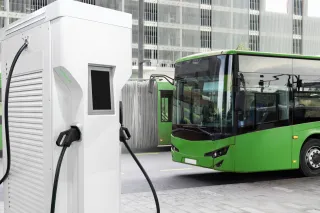“Come gather ‘round people wherever you roam and admit that the waters around you have grown, and accept it that soon you’ll be drenched to the bone. If your time to you is worth savin’, then you better start swimmin’ or you’ll sink like a stone for the times they are a-changin’.”
If you’re active in today’s city transport sector, it’s time to gather round because Bob Dylan’s words are as relevant now as they were of 50 years ago. Digitalization and the rise of transformative mobility services like the Ubers and the Hyperloops, combined with dramatic shifts in consumer habits and lifestyle and the urgent need to combat climate change, have become the springboard for emerging businesses. But for many it will be sink or swim!
Smarter means of mobility
Public transport is the core of a functioning city transport system. While in congested areas it’s often just a matter of providing sufficient capacity, in less densely populated areas and at off-peak hours, traditional public transport services face challenges in balancing service levels and costs. For this, many forward-looking mobility and transport provides are coming up with new types of customer-centric, needs-based mobility services that increase system flexibility while providing citizens with comfortable alternatives to private car use.
As the times are changing, so are user habits. The different services, ranging from, for example, on-demand transport and ride-hailing to shared taxis and peer-to-peer car sharing or dockless bikes, suit different people (e.g. individuals vs. families), different occasions (e.g. commute vs. leisure) and different locations (e.g. sub-urban vs. downtown). Citizen-centricity and finding the right fit is the key to smart mobility services.
The objectives of smart mobility include improving liability, sustainability, safety, equity, and ensuring economic growth while reducing the over-reliance on fossil fuels. But it’s not always as simple as it sounds. Consider dockless bikes, for example: while they certainly provide an additional opportunity for citizens to choose a healthy mode choice, the overall cost and (in)convenience for the public space remains less clear.
Waving goodbye to polluters
Railways, trams and metros are often the most efficient and reliable way of moving large groups of people around congested cities. However, they can only go where the tracks are laid, which still leaves the issue of first and last mile connections and other more flexible trips to be solved. With both populations and logistics needs growing, reducing the amount of vehicles – or even staying at current levels – is a major challenge.
The development and adoption rate of electric and hybrid vehicles for both public and private transport has been growing rapidly. But these still require adequate price points as well as capacity and coverage of charging stations. Therefore, it’s crucial to ensure that those vehicles already on the road (or in the air or waterways) produce as little harmful emissions as possible through technology upgrades and cleaner renewable energy alternatives – solar, wind, hydroelectricity and sustainably produced biofuels.
Collaboration vs. competition
In many cities, the public transport system is already in transition as industry players search for commercial opportunities and competitive business models while addressing basic service level needs at sustainable costs. While services such as car and ride sharing can help match demand and supply, connecting them into the city’s mobility matrix requires not just innovative thinking but new tools, business models and forms of collaboration between public and private operators. It is in the interest of all related parties to mitigate risks and distribute benefits by collaborating transparently in the race towards new value.
The impacts of smart mobility
Designing for the future is hard. Digitalization and the ubiquity of smart phones, for example, have brought opportunities and impacts unimaginable just a couple of decades ago. Looking forward, automated driving may be one disruptor that completely changes the balance of transportation. It can tip the scales in making on-demand services far more cost-efficient than they are today and at the same time make commuting in traffic more acceptable by allowing the time to be used more productively, whether for work or pleasure.
While it’s not yet clear who the future big winners and losers will be but if you’re in to win, it’s definitely time to start swimming.
Smart City development is inherently multi-technological and cross-disciplinary, and as an application-oriented research organisation VTT is an ideal partner. We work with the public sector and private companies as well as technology providers in research and innovation activities that expedites the development of smarter cities. We can guide you from the early phases of vision-creation and concept development to practical implementations of smart outcomes.




